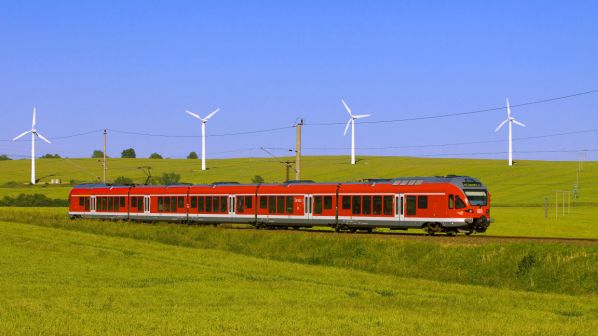The Community of European Railways and Infrastructure Managers (CER), European Rail Infrastructure Managers (EIM), and the European Rail Industry Association (Unife) were responding to the European Commission’s communication, “A clean planet for all - A European strategic long-term vision for a prosperous, modern, competitive and climate-neutral economy.”
Published on November 29, the document outlines the EC’s long-term strategy for reducing greenhouse gases, and ahead of COP 24 in Katowice next month, provides a blueprint for future EU climate, energy and transport policies that are in line with the objectives of the Paris Agreement.
In a position paper, the associations say that rail is the most sustainable and energy-efficient, low-emission transport mode and plays a crucial role in the decarbonisation of the transport sector. They urge the commission to foster win-win cooperation in climate change by rapidly reinforcing low-emission mobility in Europe, by:
- offering sustainable modal shift targets
- introducing a reporting mechanism for Member States to monitor, incentivise and facilitate progress in reducing transport emissions
- supplementing the 2011 Transport White Paper’s target for a 60% reduction in transport emissions compared with 1990 by 2050 by introducing a 2030 target
- internalising external costs in all transport mode based on a polluter pays principle
- promote rail as the backbone of sustainable mobility as agreed by ministers under the Graz Declaration
- ensuring the best use of EU funds for sustainable transport projects beyond 2020. As well as the Connecting Europe Facility introduce green bonds accessible to low emissions sectors
- further electrifying and upgrading the rail network
- supporting the development of and introduction of zero-emission, energy-efficient technologies, and
- taking stock of the Shift2Rail research initiative and extending this within Horizon 2021-2027 with a significantly larger budget.
“Rail is evolving as the backbone of a low-carbon, multimodal transport system in Europe and it is therefore the solution to address the current emissions gap,” the association say. “CER, EIM and UNIFE urge the decision-makers to increase the modal share of low-emission transport modes and support the further electrification of the rail network. In addition, the support for research and innovation in the rail sector shall be continued and intensified with the extension of Shift2Rail.”

